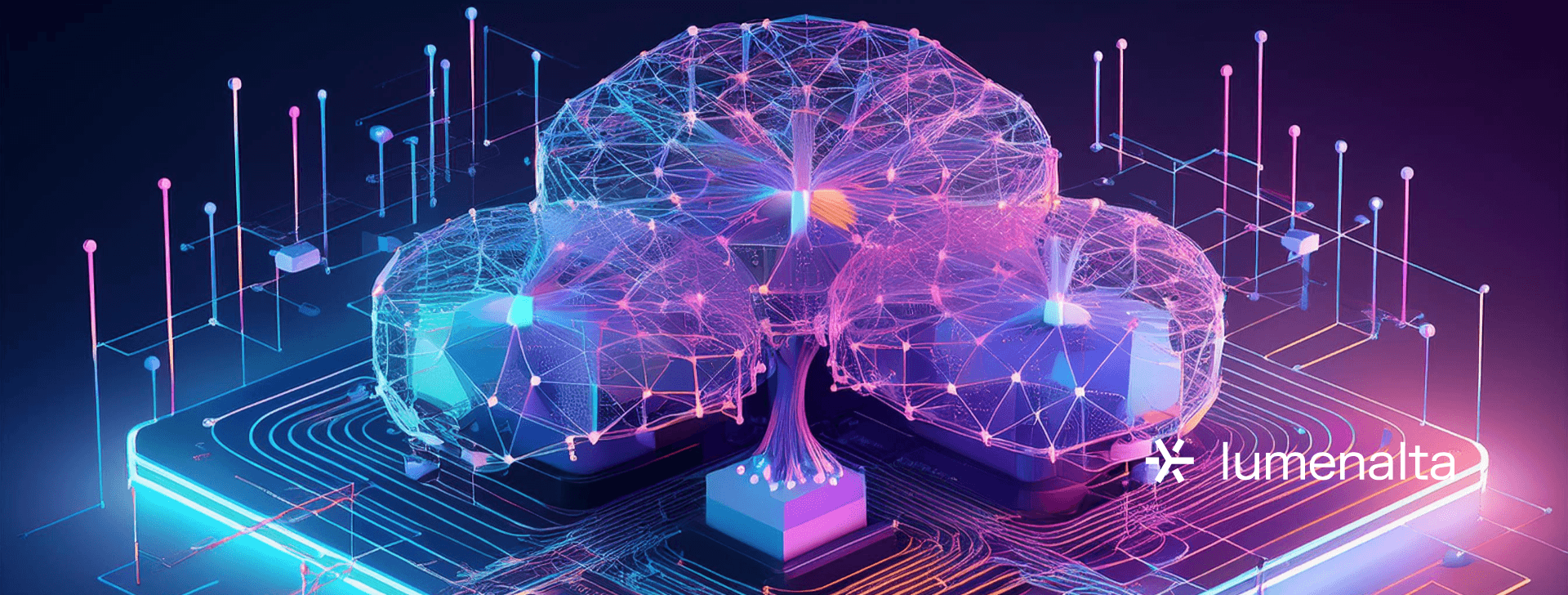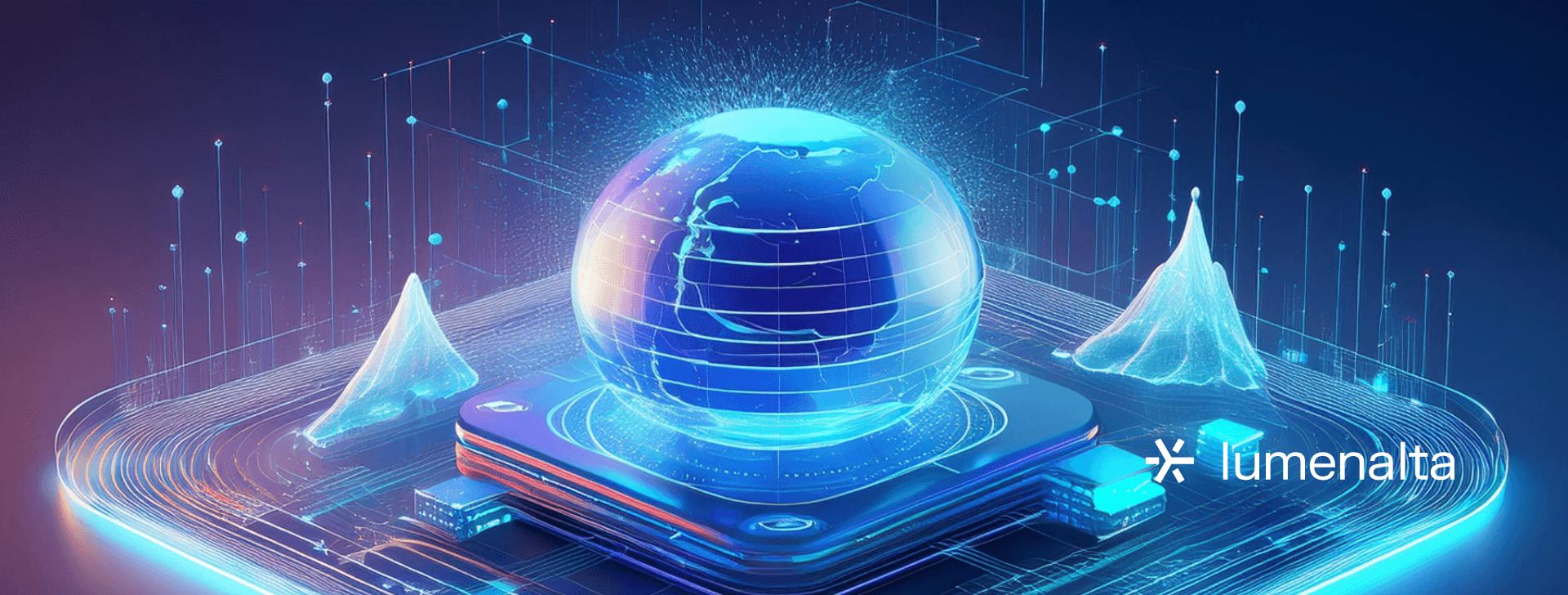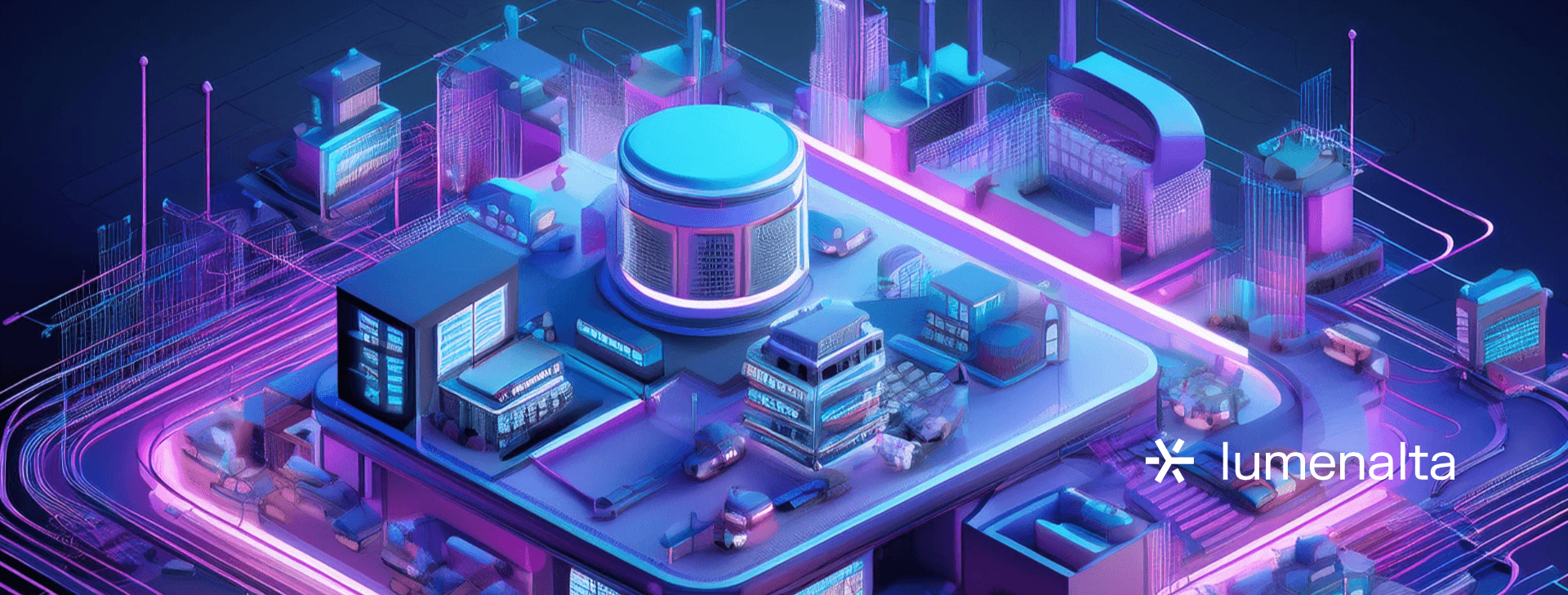From automating workflows to creating personalized customer experiences, these models are helping businesses optimize operations, reduce costs, and reveal new opportunities. Advances in model architecture and pre-training techniques have made NLP models more accessible, scalable, and adaptable, allowing organizations to easily address complex language challenges. As these technologies develop, they continue to redefine what is possible across industries.


7 of the best natural language processing models in 2025
JAN. 12, 2025
6 Min Read
Natural language processing models reshape how organizations interact with language, modernizing unstructured text into actionable insights and measurable business outcomes.
Key takeaways
- 1. Natural language processing models simplify and accelerate text analysis, allowing businesses to convert unstructured data into actionable insights.
- 2. Pre-trained NLP models provide a scalable and cost-effective foundation for solving industry-specific challenges and improving time to market.
- 3. Applications of NLP models range from automated customer support to regulatory compliance, offering measurable impact across multiple industries.
- 4. NLP tools enhance multilingual communication and real-time processing, making them invaluable for businesses operating on a global scale.
- 5. Addressing challenges like data quality and integration is critical to unlocking the full potential of NLP solutions and aligning them with strategic priorities.
The importance of natural language processing models in 2025
Natural language processing (NLP) models have become indispensable tools for businesses, researchers, and organizations in 2025. These advanced systems have modified how machines interpret and respond to human language, providing practical applications that range from automating customer service to enhancing data analytics. With the ability to understand context, sentiment, and intent, NLP models empower companies to make faster decisions based on insights derived from unstructured text, such as emails, customer reviews, and market reports.
In 2025, the reliance on NLP models continues to grow, fueled by their potential to reduce operational inefficiencies and improve customer experiences. The ability to analyze massive amounts of data in real time has helped businesses streamline workflows, improve accuracy in content creation, and identify trends that would otherwise go unnoticed. As artificial intelligence progresses, NLP remains at the forefront, addressing challenges like multilingual communication, real-time data processing, and adaptive learning for personalized services.
"Natural language processing models are reshaping how organizations interact with language, modernizing unstructured text into actionable insights and measurable business outcomes."
Key features and benefits of modern NLP models

Modern natural language processing models have advanced features designed to optimize text interpretation and authorize businesses to extract meaningful insights. These models combine state-of-the-art algorithms, deep learning architectures, and vast pre-trained datasets to deliver exceptional results.
- Contextual understanding: Modern NLP models analyze words and phrases within their context, capturing meaning based on surrounding text. This ability allows for more accurate sentiment analysis, intent recognition, and nuanced language comprehension.
- Multilingual capabilities: Many NLP models now support dozens of languages, allowing businesses to engage global audiences without additional translation tools. These systems ensure accurate language parsing while respecting cultural and linguistic nuances.
- Real-time processing: Today’s NLP systems process large volumes of data instantly, authorizing applications like chatbots, virtual assistants, and fraud detection systems to operate efficiently and respond promptly to user inputs.
- Transfer learning: Pre-trained NLP models leverage knowledge gained from one domain to perform well across different tasks. This capability saves time and computational resources, allowing businesses to deploy ready-to-use, high-performing solutions.
- Customizability: Organizations can fine-tune NLP models to meet business needs, such as creating industry-specific chatbots, optimizing search engines, or analyzing proprietary datasets. This adaptability allows businesses to align AI outputs with their objectives.
- Improved accuracy and efficiency: With breakthroughs in attention mechanisms and transformers, NLP models can now deliver higher accuracy in tasks like text classification, summarization, and sentiment analysis, reducing manual effort and boosting efficiency.
- Scalability: NLP models can handle tasks ranging from small-scale document processing to analyzing millions of text-based records. Their scalability supports enterprises in adapting to growth and fluctuating data needs.
- AI-led personalization: Businesses leverage NLP to create tailored customer experiences, such as personalized marketing campaigns, content recommendations, and adaptive learning platforms.
Modern NLP models permit businesses to tackle complex linguistic challenges and unlock new opportunities in communication, data analysis, and customer engagement. Incorporating these models into operations allows organizations to reduce costs, streamline workflows, and gain an advantageous edge in an data-backed economy.
How NLP models work

Natural language processing models operate through a series of structured steps that allow machines to analyze and generate human language with remarkable precision. These models rely on a blend of linguistic principles, machine learning techniques, and advanced deep learning architectures, such as transformers, to process and understand text in context and meaning.
The process begins with tokenization, where input text is divided into smaller units like words, phrases, or subwords. This division allows the model to handle each piece of the text as an individual component while still considering its role in the broader context. After tokenization, models conduct syntactic analysis, identifying the grammatical structure of sentences. Tasks such as part-of-speech tagging and dependency parsing help reveal the relationships between words and how they form meaning within a sentence.
Semantic analysis follows, where the model interprets the meaning of the text. Advanced NLP systems use contextual embeddings to evaluate how words relate to each other based on their placement and usage, rather than treating them as isolated entities. Transformers, a key advancement in NLP, use attention mechanisms to assign importance to different words or tokens depending on their influence on overall meaning. This approach captures intricate relationships within the data and allows the models to understand nuances in language, such as idiomatic expressions, sentiment, and intent.
Pre-trained NLP models enhance efficiency by utilizing extensive datasets during their training phase. These datasets allow the models to identify linguistic patterns, making them effective across various domains without requiring large amounts of task-specific data. This generalization significantly reduces the time and computational resources needed for fine-tuning while delivering high-quality outputs.
Once these steps are complete, the models generate structured outputs, such as classifications, summaries, or fully coherent responses. This output supports applications such as automated customer support, text summarization, sentiment analysis, and language translation. Organizations use these capabilities to streamline workflows, analyze large-scale data quickly, and create scalable solutions that align with operational goals.
With their ability to analyze and respond to natural language inputs, NLP models are becoming integral to strategies focused on time efficiency, scalability, and delivering measurable results.
7 best natural language processing models in 2025
Natural language processing models in 2025 continue to set new benchmarks in performance, scalability, and versatility. These models leverage sophisticated architectures like transformers, massive datasets, and pre-training methodologies to handle an array of tasks, from language generation to semantic analysis.
1. OpenAI GPT-4
OpenAI GPT-4 represents a groundbreaking step forward in NLP, offering unparalleled language generation and comprehension capabilities. Its ability to process complex instructions, generate human-like responses, and perform multi-turn conversations makes it a top choice for businesses and developers.
GPT-4’s transformer-based architecture allows it to excel at tasks such as summarizing lengthy documents, creating conversational agents, and even assisting with coding and debugging processes. The model's contextual understanding allows it to adapt responses based on user intent, making it a powerful tool for personalized customer support, marketing content creation, and data analysis.
Organizations benefit from GPT-4’s scalability, as it can seamlessly handle tasks of varying complexity, from individual user queries to enterprise-level document processing. Its pre-training on extensive datasets ensures reliable performance across industries, including retail, healthcare, and financial services.
2. Google BERT
Bidirectional Encoder Representations from Transformers (BERT) remains a pillar in NLP due to its innovative bidirectional approach to contextual understanding. Unlike earlier models, BERT processes entire sentences simultaneously, capturing the relationships between words and their meanings more accurately.
This model is highly effective for sentiment analysis, text classification, and answering complex queries. Its ability to work with multilingual data has made it essential for companies aiming to reach global audiences. BERT’s strength lies in understanding context-rich phrases, which is critical for industries like legal, education, and e-commerce that depend on precise text interpretations.
The open-source nature of BERT allows businesses to fine-tune the model for their specific needs without requiring substantial resources, making it an accessible yet highly effective option for organizations of all sizes.
3. Hugging Face Transformers
Hugging Face Transformers stands out as a versatile NLP platform, offering pre-trained models and a user-friendly library for seamless integration. Its ecosystem includes state-of-the-art models like GPT, BERT, and T5, allowing businesses to select tools best suited to their requirements.
This platform is widely used for document summarization, text generation, and language translation applications. The library’s flexibility supports Python and other programming languages, making it a go-to choice for developers. Additionally, Hugging Face Transformers prioritizes accessibility, offering tools that simplify model fine-tuning and deployment across multiple domains.
Hugging Face is known for fostering collaboration among the NLP community, allowing businesses to leverage its robust features to create scalable and future-proof solutions.
4. spaCy
spaCy is an open-source NLP framework known for its speed and efficiency, making it ideal for production-level applications. Unlike larger models that prioritize versatility, spaCy is designed for specific tasks such as named entity recognition, tokenization, and dependency parsing.
This lightweight model is particularly useful for organizations requiring high-speed text processing, such as news agencies, logistics companies, and legal firms. spaCy’s integration capabilities allow seamless alignment with business workflows, delivering actionable insights without adding unnecessary complexity.
spaCy’s ability to handle large datasets efficiently ensures cost-effective implementation for businesses focused on scaling operations without compromising performance.
5. Microsoft Turing-NLG
Microsoft’s Turing Natural Language Generation (Turing-NLG) model is one of the largest language models available, excelling in language understanding and generation tasks. Its ability to produce coherent and contextually relevant outputs makes it an excellent choice for content generation, question-answering, and conversational AI.
Turing-NLG’s large-scale architecture permits it to process complex datasets and deliver high-quality insights for enterprises requiring in-depth text analysis. Its applications range from assisting with customer service automation to creating detailed technical documentation, making it a reliable solution for industries with intricate language requirements.
The scalability of Turing-NLG allows it to support organizations aiming to maximize operational efficiency while minimizing manual efforts.
6. Cohere AI
Cohere AI is gaining attention for its focus on providing NLP solutions tailored for enterprise use. The model offers text classification, semantic search, and document summarization capabilities, designed to help businesses extract insights from large datasets.
Cohere AI’s emphasis on user-friendly APIs simplifies the integration of NLP capabilities into existing systems, enabling organizations to deploy applications quickly. Its adaptability makes it a valuable asset for industries such as financial services, where accurate data interpretation is crucial for driving informed strategies.
The platform’s focus on enterprise scalability ensures businesses can handle growing needs without compromising performance, aligning with goals like cost-effectiveness and measurable impact.
7. Anthropic Claude
Anthropic’s Claude model emphasizes safe and ethical AI, providing a robust NLP solution that prioritizes transparent and reliable outputs. Claude is designed to minimize errors and biases, making it a strong choice for organizations requiring sensitive data analysis or customer interactions.
Its applications range from summarizing documents and drafting reports to creating customer-facing chatbots capable of handling nuanced conversations. Claude’s attention to safety aligns well with industries such as healthcare and finance, where accuracy and compliance are critical.
With its focus on ethical AI and high-quality performance, Claude offers organizations a future-proof solution that balances innovation with responsibility.
These seven NLP models represent the best available tools in 2025, catering to a wide range of business needs. Whether scaling operations, automating workflows, or improving data-backed strategies, these models provide measurable benefits that enhance operational efficiency and long-term value.
NLP use cases by industry

Natural language processing models have become essential across industries, solving challenges that require precision, speed, and the ability to process vast amounts of unstructured data. Businesses rely on NLP models to automate labor-intensive tasks, reveal insights from text-based information, and enhance customer engagement. These models offer solutions that help companies reduce costs, scale operations efficiently, and achieve measurable results. From retail to healthcare, NLP models are reshaping processes to make them more agile and effective, unlocking new opportunities and supporting data-backed strategies.
- Retail and e-commerce: NLP models improve customer experiences through personalized product recommendations, automated chatbots, and sentiment analysis of customer reviews. These tools also analyze sales data to predict inventory needs, reducing stockouts and excess inventory. Retailers gain a clear understanding of shifting customer preferences, allowing them to maximize ROI through better-targeted campaigns.
- Healthcare: NLP tools process large volumes of clinical notes, medical records, and research data, accelerating administrative workflows and improving diagnosis accuracy. Tasks such as medical transcription, summarizing electronic health records, and extracting insights from patient feedback support better resource allocation and improve patient care.
- Financial services: Financial institutions use NLP models to analyze market trends, detect fraudulent transactions, and assess risk. Automated tools that summarize financial reports and parse regulatory documents allow companies to scale compliance efforts without increasing costs. These models also support investor strategies by interpreting news and social sentiment data.
- Legal and compliance: The legal industry benefits from NLP through faster contract analysis, clause extraction, and legal research. Automating repetitive review processes gives firms the ability to reduce the time needed to manage cases and improve document accuracy. These tools also help organizations stay aligned with regulations, minimizing compliance risks and protecting operational integrity.
- Logistics and supply chain: NLP tools analyze supplier communications, optimize delivery routes, and predict supply chain disruptions based on historical data and market signals. Companies gain efficiencies by identifying inefficiencies in workflows, and improving service levels while controlling operational costs.
- Education and training: Learning platforms powered by NLP create personalized lesson plans, grade assignments and provide detailed feedback to learners. Automated text analysis tools make education more accessible by offering real-time language translation and transcription services, and supporting multilingual and remote learning initiatives.
- Customer service: NLP-powered chatbots handle inquiries, resolve issues, and guide customers through self-service options. These systems reduce response times, improve satisfaction, and allow businesses to scale support operations without significant investment in staffing. Virtual assistants also analyze customer sentiment, helping companies fine-tune services to better meet expectations.
NLP models offer powerful solutions that align with industry-specific goals, delivering efficiency and measurable outcomes. Automating complex processes permits these tools to support faster time to value, reduce operational overhead, and help businesses focus on strategic priorities. As companies adopt these technologies, NLP is poised to unlock untapped industry opportunities.
"Modern NLP models analyze words and phrases within their specific context, capturing meaning based on surrounding text and improving accuracy across tasks."
What is a pre-trained NLP model?

A pre-trained natural language processing model is a machine learning tool already trained on extensive datasets to understand and process human language. These models provide a foundational understanding of language, including grammar, context, and word relationships, which organizations can apply to various tasks without starting from scratch.
The training involves exposing the model to large text datasets sourced from books, articles, and other publicly available material. This broad exposure allows the model to generalize patterns and develop linguistic knowledge that can be applied across industries and use cases. Popular pre-trained NLP models such as OpenAI GPT-4, Google BERT, and Hugging Face Transformers have gained prominence for their adaptability and high accuracy in processing language-based tasks.
A significant advantage of pre-trained models is their fine-tuning ability for specific applications. Fine-tuning takes the pre-trained system and retrains it using task-specific or industry-specific data. This process allows businesses to address challenges such as sentiment analysis, summarizing text, or automating customer service while significantly reducing development time and costs.
Pre-trained NLP models give businesses the ability to implement scalable, reliable solutions with measurable impact. They support faster adoption of advanced NLP technologies, allowing organizations to reduce operational overhead while achieving better outcomes in language processing tasks.
Challenges with integrating natural language processing models

While natural language processing models offer several benefits, implementing them effectively has several challenges. These obstacles often stem from the complexities of working with advanced algorithms, large datasets, and industry-specific requirements. Addressing these challenges is critical to achieving measurable business outcomes and scaling solutions efficiently.
- Data quality and volume: NLP models require high-quality and varied datasets for training and fine-tuning. Poorly structured or insufficient data can lead to inaccurate outputs, limiting the model's effectiveness in actual applications. Cleaning and curating data for specific use cases can be resource-intensive and time-consuming.
- Model customization: Pre-trained NLP models often need fine-tuning to meet the unique requirements of a specific industry or organization. While fine-tuning can enhance performance, it requires technical expertise and access to domain-specific datasets, which may not always be readily available.
- Integration complexity: Incorporating NLP models into existing systems can present significant challenges. Ensuring compatibility with legacy infrastructure, maintaining performance at scale, and addressing governance issues often require careful planning and robust technical frameworks.
- Bias in outputs: Pre-trained NLP models are trained on publicly available datasets, which may inadvertently include biases. These biases can influence outputs, leading to inaccurate or problematic interpretations in sensitive applications such as recruitment, healthcare, or legal documentation.
- Regulatory and compliance considerations: Industries such as finance and healthcare must adhere to strict regulatory standards when deploying AI tools. NLP implementations must align with data privacy laws, ethical guidelines, and compliance frameworks, requiring additional scrutiny during development and deployment.
- Performance limitations: Despite advancements, NLP models can struggle with understanding highly nuanced language, such as idiomatic expressions or ambiguous queries. Improving accuracy for such scenarios often requires advanced configurations or alternative approaches.
Overcoming these challenges involves strategic alignment between technical teams and stakeholders, clear implementation goals, and a focus on measurable business impact. Addressing data, infrastructure, and compliance issues permits organizations to unlock the full potential of NLP models while minimizing risks and inefficiencies.
Natural language processing models represent more than technological advancement—they are tools for unlocking efficiency, scalability, and untapped potential. With their ability to streamline operations and deliver actionable insights, NLP models empower organizations to drive meaningful results. At Lumenalta, we specialize in tailored digital solutions that align with your goals, ensuring you can innovate confidently. Let’s build a brighter path forward together.
Table of contents
- The importance of natural language processing models in 2025
- Key features and benefits of modern NLP models
- How NLP models work
- 7 best natural language processing models in 2025
- 1. OpenAI GPT-4
- 2. Google BERT
- 3. Hugging Face Transformers
- 4. spaCy
- 5. Microsoft Turing-NLG
- 6. Cohere AI
- 7. Anthropic Claude
- NLP use cases by industry
- What is a pre-trained NLP model?
- Challenges with integrating natural language processing models
- Common questions about NLP
Common questions about NLP
What industries benefit the most from natural language processing models?
How do NLP models handle different languages?
What is the difference between a pre-trained NLP model and one built from scratch?
How do businesses address bias in NLP models?
What are some key factors to consider when integrating NLP models?
Want to learn how NLP can bring more transparency and trust to your operations?











